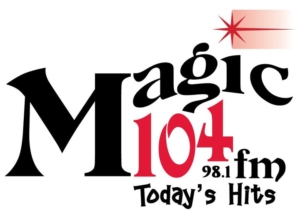Recent Posts
If you need assistance with the public file, please contact Keith Murray at 603-356-8870 or gm@wmwv.com.
If you need assistance please contact Keith Murray at 603-356-8870 or e-mail gm@wmwv.com.
If you need assistance with the public file, please contact Keith Murray at 603-356-8870 or gm@wmwv.com.
If you need assistance please contact Keith Murray at 603-356-8870 or e-mail gm@wmwv.com.

Single Vehicle Accident Near Outlook Apartments in North Conway Causes Power Outage
At approximately 7:00 pm on Thursday night Conway Police Department (CPD) was dispatched to a single vehicle accident into a telephone pole in the area of 3158 White Mountain Highway. When officers arrived on scene they observed a Silver 2004 Saab that had come to rest against a telephone pole located off of the southbound shoulder. After striking the pole the vehicle struck the white fence in front of the Outlook Apartments. The vehicle operator, a 17 year old female from Fryeburg, ME, was uninjured in the crash. She stated that she was traveling southbound and was blinded by a vehicle passing her in the northbound lane that failed to extinguish its high beams. It does not appear that speed or operator impairment were factors in the crash. The telephone was replaced and power was lost in the area for a short time. Two vehicles lawfully parked in the parking lot of Overlook Apartments were damaged as a result of debris from the telephone and fence that were struck by the vehicle.
Chief Christopher Mattei
Conway Police Department
Invasive Spotted Lanternfly Egg Masses Found in Maine
AUGUSTA – The Maine Department of Agricultural, Conservation and Forestry (DACF) announced finding egg masses of the invasive spotted lanternfly (SLF) on trees in Maine communities and is urging residents to report any sign of the invasive pest. The egg masses were found on trees from Pennsylvania, where SLF is established and planted in Boothbay, Freeport, Northeast Harbor, and Yarmouth.
DACF urges anyone who received goods or materials, such as plants, landscaping materials, or outdoor furniture, from a state with a known SLF infestation to carefully check the materials, including any packaging, for signs of SLF. There are currently known populations of SLF in Connecticut, Delaware, Maryland, New Jersey, New York, Pennsylvania, Virginia, and West Virginia.
If any life stages of SLF are found, residents should take a photo or collect the specimen and report any pest potential sightings to bugwatch@maine.gov. Residents should look for large, gray insects, about one inch long, with black spots and red underwings, or inch-long, rectangular yellowish-brown egg masses covered with a gray waxy coating. Egg masses may be found on any flat surface.
“These most recent finds call attention to the fact that there are many ways that spotted lanternfly can travel here from other states,” said State Horticulturist, Gary Fish. “Early detection plays an important role in the protection of our state’s economic and ecological resources from invasive species, and we ask anyone who may have received shipments of wood, ornamental plants, or any other materials from Pennsylvania or other Northeastern states to help protect the natural resources and agricultural industries of Maine by checking for and reporting any signs of spotted lanternfly.”
The spotted lanternfly (Lycorma delicatula) is an invasive sap-feeding insect from Asia first found in the United States in 2014, in Pennsylvania. While the preferred host plant of this pest is tree-of-heaven (Ailanthus altissima), spotted lanternfly attacks over 100 species of trees, shrubs, and vines, and has the potential to impact a broad range of agricultural commodities, including apples, peaches, grapes/wine, maple syrup, as well as the ornamental nursery industry.
As many families across the state spend more time at home during the COVID-19 pandemic and are undertaking activities such as gardening to improve their outdoor spaces, Maine has seen an increase in purchases of items such as outdoor furniture, play structures, gazebos, as well as trees and shrubs for landscaping. When shipped from areas with SLF infestations, these products, and the vehicles used for transportation, can unintentionally carry the pest into new areas.
Because no live SLF has been found in Maine, there is currently no evidence that SLF has become established. The DACF Horticulture Program has inspected all the suspect trees and asks the homeowners and landscape companies to keep an eye on the areas where egg masses were found to confirm that no live populations are present. Spotted lanternfly has not previously been found in Maine.
For more information about the spotted lanternfly, please visit: https://www.maine.gov/dacf/php/caps/slf/index.shtml
If you have seen any of the life stages of this insect in Maine, please report it: bugwatch@maine.gov.
TRUMP AND BIDEN TO MEET IN FIRST DEBATE TONIGHT AT 9PM!
President Trump and former Vice President Joe Biden will meet tonight (September 29th) in the first of their three presidential debates, being held on the campus of the Cleveland Clinic and Case Western Reserve University in Cleveland. Because of the coronavirus pandemic, there will be no traditional pre-debate handshake and the audience will be limited to just 75 to 80 people, all of whom will be tested beforehand. The 90-minute debate will run from 9:00pm to 10:30 p.m. ET and be aired on ABC, CBS, NBC, CNN, Fox News, MSNBC and C-SPAN, as well as on several streaming platforms. The vice presidential debate is next on October 7th between Vice President Mike Pence and Senator Kamala Harris, and then Trump and Biden will debate again on October 15th and 22nd.